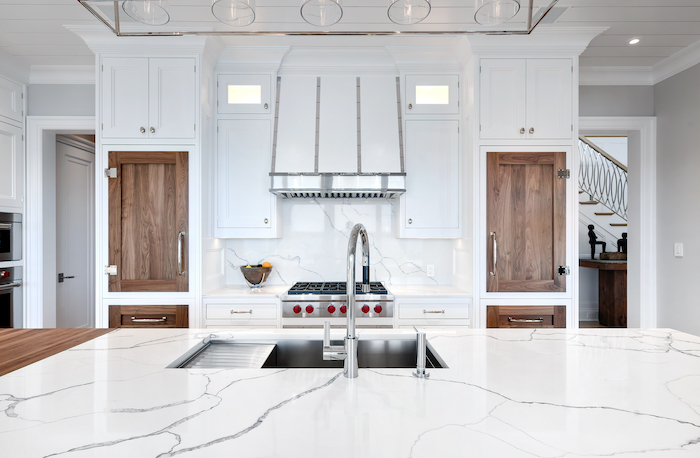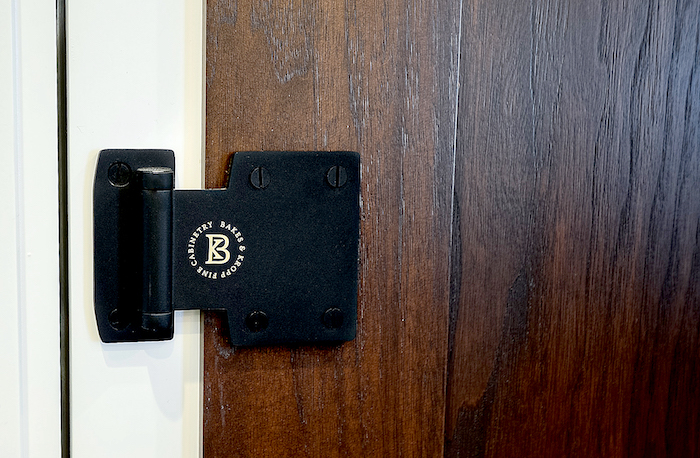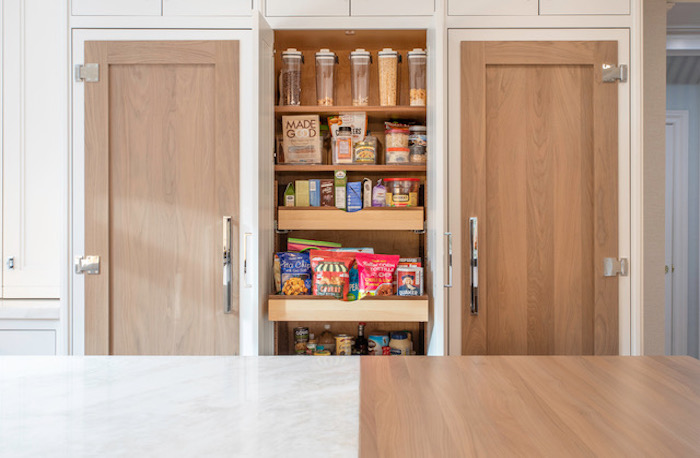Cabinet Hinges: A Designer’s Primer

May 30, 2022
Cabinet hinges tell a story, a story which very few other aspects of cabinetry can tell. They tell the user about the quality, the aesthetic, the age, the use and the journey of a particular cabinet, box or furniture piece. Think about it, almost every box has a hinge. The hinge might be the very material itself folded down, like a cardboard box. Or it might be the most ornate mechanical device made with precision ball bearings as might be on something NASA creates. Somewhere in between those extremes lies the world of cabinetry hinges.
Types of Cabinet Hinges
Cabinet hinges can be grouped into three main types: concealed, butt or surface mount. There are a few outliers like wrap-around hospital hinges, but we will concentrate on the three afore-mentioned models.
Let’s start with the simple butt hinge. This is what you think of when you think of a hinge. Most passage doors have butt hinges and many cabinets do, too. This is a hinge that can be dressed up with balls or finials on the end, the pins can be removable or fixed, and they come in a huge variety of qualities and finishes. At Bakes & Kropp, we pride ourselves in using this traditional hinge in bold yet understated ways. Our standard BK-408 hinge is a 2 x 2 solid brass butt hinge that comes in a variety of finishes, polished nickel being the classic. This hinge has no ball or finials and is not overly large, but it is there, showing on the outside of the cabinetry just enough to say, “I am true quality, open me”. However, by request we do many different styles of butt hinges, some are large for dramatic effect or just dressed up a bit with a finial.
The concealed hinge is very popular as well. Concealed hinges are hidden behind the door when closed and very often feature closing springs or soft-close devices on the hinge. These hinges are used when clients prefer a cleaner exterior and can be used to create a modern effect or clean cottage look. At Bakes & Kropp we use the finest concealed hinges imported from Austria. These allow the door to open and close with a smoothness and precision unlike any other, even coming to a nice soft close at the end.
The last main type of cabinet hinge is the surface mount. This is where things get really fun! Surface mount hinges do just that, lay on the surface of the door and adjoining frame. They are right out front for the world to see. Some popular surface mount hinges are the “icebox” and the “strap” hinge. At Bakes & Kropp we love a good icebox hinge. So much so, we have two variations that are proprietary to us. We have a softer rounded icebox and a more modern square icebox to chose from. We also love when clients bring hinge ideas with them; surface mount hinges are one area we have been truly inspired by client choices!
Anatomy of a Cabinet Hinge
To better understand an item, it is good to know its parts and their names. Cabinet hinges are no different. A hinge is made up of a few different parts as defined below:
Pin: This is what the two halves of the hinge rotate on. All but the simplest flap hinge have pins of some sort. Some are removable so you can take down the door without unscrewing the hinge and some are fixed.
Leaves: The hinge leaves are the two sides that are joined by the pin. The leaves are what screw to the door and the frame. We use the plural form of the word because there has to be two in order to be a hinge but if you had just one it would properly be called a “leaf”.
Mortise: Mortise is the recess that a butt hinge sits into so it is not proud of the door edge. Fine mortises are a hallmark of quality craftsmanship.

Arm: The term “arm” when it comes to hinges really only applies to concealed models. This is the part of the hinge that extends back from the hinge and attaches to the inside of the cabinetry. At Bakes & Kropp, we dress up our arms with a nice logo cover so the adjustment holes are not seen.
Cup: This is also a term that goes along with the concealed-type hinge. This is the part that goes in the door.
Finish: This is the surface you see. With a concealed hinge the options are generally limited to stainless and sometimes black. But with Butt and Surface mount hinges the options are endless! The core material may be brass or steel but the finish can be chrome, polished Nickel, Brushed Brass, Polished Brass, Brushed Nickel etc. etc.
How About the Screws?
We would be remiss in talking about cabinet hinges without mentioning screws. Not all screws are the same. Screws come in hundreds of varieties and lengths and finishes to suit different needs. When studying the hinges of cabinetry you should find the screws to fit nice and flush in the recess, the heads in a matching finish and not burred or scarred. That is the first sign that it was installed correctly. But the length and thread type are very important, too. A competent cabinetmaker will use the longest reasonable screw to secure the hinge and the thread will be finer in hardwoods and coarser in softwoods and composites.
What’s the Catch?
While the catch of a door is not a hinge, it is worth mentioning here. Catches can be mechanical – where the user needs to operate them – or magnetic, which hold the door closed. We have developed an exclusive design: The soft-close magnetic door catch. We are able to use traditional butt hinges and provide a soft-close feature. Many cabinets use a magnetic catch when using butt hinges and they prove to be very noisy.
What’s the Best Cabinet Hinge?
This is a question that gets asked a lot. And the answer is all of them! They all offer different aesthetics and functionality. If you’re doing a full-overlay, Euro-style kitchen, then concealed is the pick. If you’re looking for a small flash of tradition, then perhaps a classic butt hinge is in order. If you want your hinges to make a bold statement, then try a surface mount hinge on for size. This is an area where you cannot go wrong and you can use your options to create the look of your clients’ dreams!
—By Paul J. Kropp, chief operating officer of Bakes & Kropp and a skilled woodworker and master craftsman.
More News
April 16, 2024 | Awards & Events
Kips Bay Boys & Girls Club Honors Ellie Cullman, Cosentino
April 15, 2024 | Trends & Inspirations
Houzz: Renovation Slows, but Design Pros Optimistic
April 15, 2024 | KBB Collective
Outdoor Kitchen Style: Maximizing Style & Functionality in Small Spaces
April 14, 2024 | Awards & Events
Coverings 2024 Announces 10th Class of Rock Stars
April 13, 2024 | Awards & Events
ICFF Announces 2024 Programming and Features
April 2, 2024 | Sponsored
Whirlpool Corp. Brings Purposeful Innovation Home
